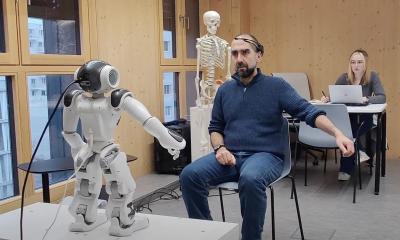Article • Opinion article
Post-stroke spasticity care – a new approach
Dr Ganesh Bavikatte, Neurorehabilitation Specialist, has developed a solution along with an international expert team to untangle the complex post-stroke spasticity care pathway
By Dr Ganesh Bavikatte

With Europe’s ageing population, stroke cases are on the rise, with estimates suggesting around a 35% increase from the number of cases in 2015 to 2035. And thanks to the greatly improved emergency care and delivery of modern health care, more people are surviving life-threatening strokes than ever before.
But there’s a problem. Care for patients in the weeks and months after their stroke, administered by a multi-disciplinary team of clinicians and rehabilitation specialists, is often uncoordinated and fails to meet the patient’s complex needs.
Too many stroke survivors are getting lost in the system
I can’t really put into words the importance of post-stroke rehabilitation. It can be heart-breaking. We’re talking about a person’s prospects of participating in society, earning a livelihood, living independently, or whether they are even going to be able to leave the house again. But in the UK, almost half of stroke survivors feel abandoned after they leave hospital, and only three in ten are getting the nationally recommended six-month assessment.
I believe we can do better.
Spasticity, a neurological condition that I’ve been studying for many years, is a complicated and highly debilitating issue that emerges in a lot of stroke survivors. It causes muscles to contract involuntarily, limiting coordination and movement. Stroke is the biggest known cause of spasticity, presenting in around 43% of cases. If we predict or catch it early there is often a clear treatment pathway and better outcomes for patients.
Unfortunately, many stroke survivors do not get referred to a spasticity specialist early enough and so do not get the treatment they need, leading to a diminished quality of life. The complications of spasticity range from the physical (disfigurement, skin infection) to the functional (impaired mobility, pain/discomfort), medical (cardiovascular, respiratory, bladder and bowel problems) and psychosocial (social isolation, depression).
Introducing The Post-Stroke Spasticity Risk Assessment System
I truly believe that this tool has the potential to raise the standards of care for stroke patients during the crucial window after they’ve suffered a stroke
Ganesh Bavikatte
Working together with a group of experts in the field of stroke rehabilitation, and with support from the Allergan Medical Institute, we have designed The Post-Stroke Spasticity Risk Assessment System, a new tool that is being used to predict, prevent and manage spasticity when it occurs following stroke for the greatest possible clinical outcomes. Used as an early warning system and a prioritising scale, it can help to categorise the urgency of the intervention required and prioritise the speed at which these interventions need to be delivered.

© Allergan
Using our own clinical expertise and published literature, we defined a list of risk factors for spasticity in stroke survivors. These risk factors were then categorised according to their urgency and the risk for the patients. From here, we developed best-in-class recommendations for how spasticity should be assessed and managed as per the severity of the patient’s condition.
In practice, this system can be used by physiotherapists and doctors in both primary and secondary care, when evaluating patients who have had a stroke, which should occur within 12 weeks post-stroke, and during regular follow-up visits. We are currently looking to bring the system into practice across Europe as soon as possible and make this the benchmark for all major treatment guidelines globally.
I truly believe that this tool has the potential to raise the standards of care for stroke patients during the crucial window after they’ve suffered a stroke. My hope is that by enabling physicians, nurses, physiotherapists, occupational therapists and the many other professionals involved in rehabilitation to provide faster, better-coordinated care, more patients with spasticity can have happier, productive lives and look forward to what the future holds.
Support for The Post-Stroke Spasticity Risk Assessment System, and therefore some content included in this article, was provided by the Allergan Medical Institute.
11.12.2019






